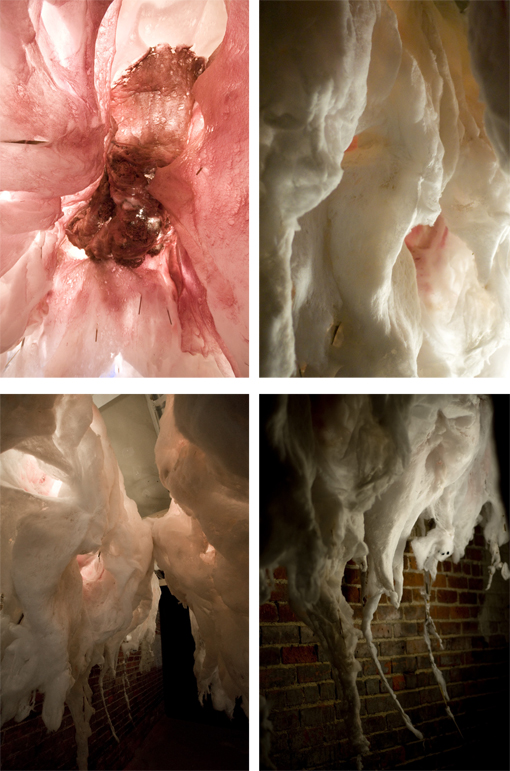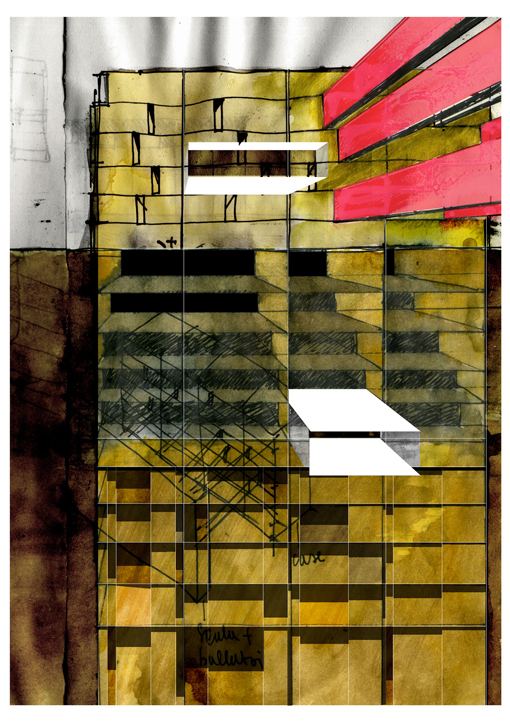ABOUT DISGUST

Hover – image credits Studio Sift
text Disguincio & Co
From an etymological perspective, the word “Disgust” (“Disgusto” in Italian) has two components: “Dis” that expresses the sense of opposite, negation and deprivation and “Gust” (“gusto” that in italian means taste or pleasure). As they are brought together, the former has an antonymic effect on the latter. In perceptional terms, when Gusto arises, it has a positive value, expressing the pleasure that derives from something that is good (as in, for example, food) or something that is beautiful and elegant. Whereas in the case of Gusto the subject remains somewhat within the cognitive dimension , in the case of Disgust the experience is a more reflexive one, characterized by a lower level of cognitive control. While both feelings share a connection with the process of (dis)liking something, the Disgust reaction is more severe, more spontaneous. That is to say it is not conscientious but sensitive – even hypersensitive – and it arises as a reaction that overcomes the body before the brain has the opportunity to be engaged.
As an active perception the arousal of Disgust is not confined to aesthetic judgment; it is, rather, more a pulse, a borderline emotion, taking its place between the Dionysian and Apollonian dimensions. While it can – and often does – lead to stirrings of rejection in the subject, it can, paradoxically, also arouse a strong sense of curiosity, even attraction, as the perceptive faculties are engaged. This moment is not immediate, but progressive: the Disgust reaction potentially marks the transitional state between something that initially repels but subsequently attracts, giving access to the realm of wonder. Even if it cannot be deduced that everything that is disgusting is also attractive, the salient point is that the complexity of the process merits further consideration; for one, to reduce Disgust only to the negative connotations conventionally attributed to the term betrays its power. Its constitutive stages progressively amplifies the subject’s perception: as their attention falls on the details of what at first may have generated feelings of repellence, gradually curiosity operates to provoke contemplation of the object (to understand it in a deeper way), allowing, finally, access to the realm of the wonderful.
Disgusto etimologicamente si compone dalla particella “DIS” che esprime, con connotazione negativa, il senso di contrario, di negazione o di privazione e “GUSTO” che tra dalla radice gus, che esprime soddisfazione, essere contento; in greco geyma (per geus-ma) cibo e per (geyso) faccio gustare. Dal punto di vista sensoriale, il gusto è la capacità di percepire i sapori, ma ha anche il valore positivo di dichiarare il piacere ricavato da un cibo oppure da ciò che è bello e elegante. Mentre nel gusto la dimensione cognitiva viene mantenuta,determinando un passaggio importante nella valutazione, nel disgusto è lo stato effettivo, la tangibilità della cosa, che prende il sopravvento. Disgusto è una percezione chesi lega al senso del gusto, ma se ne distanzia ponendosi in una dimensione del sentire, manifestandosi in reazioni ben più dirette, spontanee; non un sentire conscenzioso, ma sensibile, e anzi ipersensibile, nei confronti di qualche cosa che tocca lo stomaco, ancora prima del cervello.
Il disgusto non è una percezione attiva, non si limita ad essere giudizio estetico, è una pulsione, un’emozione borderline, collocabile come punto di congiunzione, tra due intensità rappresentate dalla visione Dionisiaca e Appolinea. Si manifesta nell’esatto momento in cui si amalgama il ripudio, verso la cosa percepita, e attrazione verso la stessa. Questo non avviene in un passaggio immediato, ma attraverso un passaggio progressivo, il disgusto diventa il mezzo, lo strumento di transizione da qualche cosa di ripugnante verso qualche cosa di attraente, meraviglioso. Si può dunque dire che il nauesente sia attraente? Dire che disgustoso è uguale ad attraente non avrebbe senso, nell’intrinseco significato delle parole, ma dobbiamo considerare che l’emozione del disgusto non esprima esclusivamente una connotazione negativa. Il modo in cui il disgusto opera è un percorso, fatto di passaggi, in cui si ha nel primo momento la repulsione, che porta ad un amplificare le percezioni, portando l’attenzione ai dettagli di ciò che prima si ripudiava, il disgusto lo studia, cerca di conoscerlo, si pone vigile verso una cosa che può contaminarlo; questa attenzione continua a mutare, diventando curiosità, interesse. Soltanto il disgusto consente l’accesso allo splendore, all’indicibile bellezza del mondo, scrive Luigi Pareyson.
Related Posts :
Category: Article
Views: 6341 Likes: 2
Tags: cityvision mag , disguincio & co , mirco bianchini , mirko daneluzzo , obsession , Sick & Wonder
Comments:
Info:
Info:
Title: ABOUT DISGUST
Time: 5 marzo 2013
Category: Article
Views: 6341 Likes: 2
Tags: cityvision mag , disguincio & co , mirco bianchini , mirko daneluzzo , obsession , Sick & Wonder






